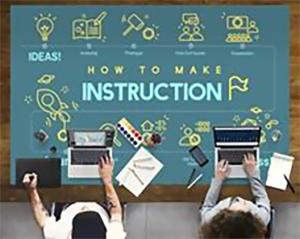The Case for Designing Active Learning Activities to Enhance Information Recall

Lecture, as an education design strategy, is familiar and perhaps comfortable to us all. So much so that paradigms exist regarding how to give and receive knowledge and skills.
Davis and Arend (2013) describe the lecture paradigm as, “…a pedagogy of telling, of sharing a body of knowledge through textbooks and lectures, and insisting that the content of the discipline be ‘covered,’ remembered, and recounted” (p. 5). In this paradigm, the student is the passive recipient of knowledge. His or her task is to store the information long enough to achieve the desired grade on a summative evaluation (test, paper, etc.). The unfortunate consequence of this paradigm is that much of the information the student gained is lost and cannot be retrieved.
Lecture and Memory Decay
Various studies highlight that passive learning via lecture does not yield long term retention of the content lectured upon. For example, Freeman et. al. (2014) performed a metanalysis to examine the impact a course designed utilizing the lecture paradigm had on student performance in undergraduate science, math, and engineering courses. They discovered that, “students in classes with traditional lecturing were 1.5 times more likely to fail (exams) than were students in classes with active learning” (p. 8410).
The ability to transfer knowledge and skills from short-term to long-term memory may be a chief reason why lecture alone does not produce desired retention.
A classic study by Ebbinghaus (1885) found that it is not uncommon to forget about 75% of what we learn after 48 hours. According to Sousa (2011), “(i)formation is most likely to get stored if it makes sense and has meaning” (p. 52). Actively engaging with content helps students create their own meaning around the material, thereby promoting retention.
Active Learning and Information Retention
According to The Greenwood Dictionary of Education: Second Edition (2011), active learning is defined as:
The process of having students engage in some activity that forces them to reflect upon ideas and upon how they are using those ideas. Requiring students to regularly assess their own degree of understanding and skill at handling concepts or problems in a particular discipline. (p. 6)
Faculty can set the stage for students to connect meaning to what they are learning by asking students to actively engage with information vs. passively receive information. This design strategy helps students to move learned concepts from short-term to long-term memory (Willis, 2006; Pociask, DiZazzo-Miller, & Pellerito, 2011; Sousa, 2011).
How can one change a course’s design away from reliance upon lecture toward promoting students actively engaging with the content? There are many options available to faculty. In an upcoming post, I’ll outline several strategies that can be easily incorporated into a face to face course design.
Glenda Robertson MA,RN, is an Instructional Designer in the College of Nursing at CU Anschutz. Interested in learning more about Glenda?
References
Collins, J. W., & O’Brien, N. P. (Eds.). (2011). The greenwood dictionary of education (2nd ed.). Santa Barbara, CA: ABC-CLIO, LLC.
Davis, J. R., & Arend, B. D. (2013). Facilitating seven ways of learning: A resource for more purposeful, effective, and enjoyable college teaching. Sterling, VA: Stylus Publishing, LLC.
Freeman, S., Eddy, S. L., McDonough, M., Smith, M. K., Okoroafor, N., Jordt, H., & Wenderoth, M. P. (2014, June 10). Active learning increases student performance in science, engineering, and mathematics. Proceedings of the National Academy of Sciences of the United States of America, 111(23), 8410 – 8415. Retrieved from www.pnas.org/cgi/doi/10.1073/pnas.1319030111
Ebbinghaus, H. (1885). Memory: A contribution to experimental psychology. (H. A. Ruger & C. E. Bussenius, Trans.). New York, NY: Teachers College, Columbia University. Retrieved from http://psychclassics.yorku.ca/Ebbinghaus/index.htm
Pociask, F. D., DiZazzo-Miller, R., & Pellerito, J. M. (2011). Learning as an adult and cognitive factors in learning. In R. DiZazzo-Miller & J. M. Pellerito (Eds.),
Preparing for the occupational therapy national board exam: 45 days and counting (pp. 19 – 31). Sudbury, MA: Jones and Bartlett Publishers.
Sousa, D. A. (2011). How the brain learns (4th ed.). Thousand Oaks, CA: Corwin.
Willis, J. (2006). Research-based strategies to ignite student learning. Alexandria, VA: Association for Supervision and Curriculum Development.






Add new comment